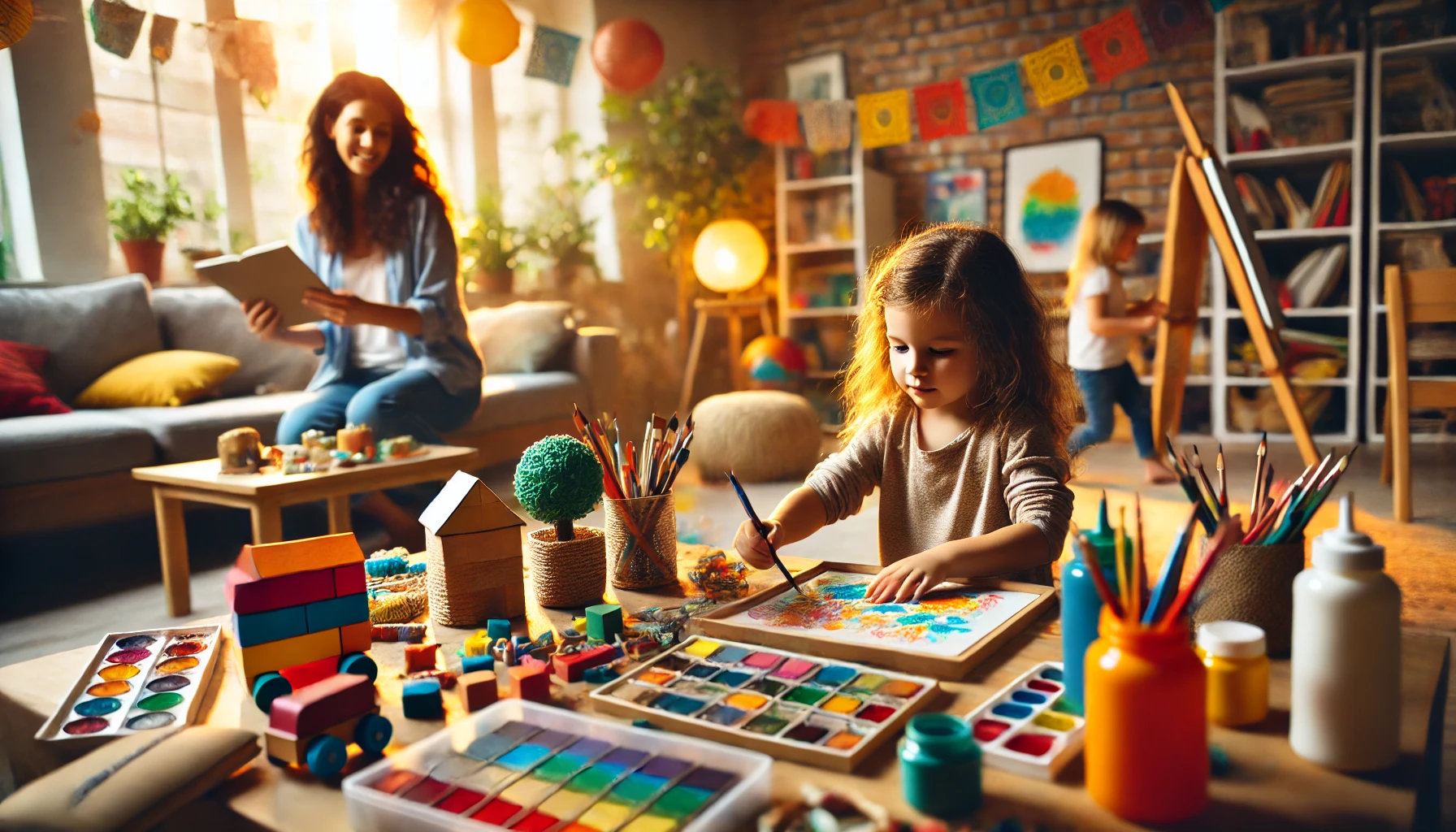Creativity is an essential skill that helps children express themselves, solve problems, and develop critical thinking abilities. Encouraging creativity at home allows kids to explore their imagination, build confidence, and develop a love for learning. In this article, we’ll explore practical ways to inspire creativity in young children through play, art, storytelling, and exploration.
Why Creativity is Important for Children
- Enhances problem-solving skills – Encourages children to think outside the box.
- Boosts self-expression – Helps kids communicate thoughts and emotions in unique ways.
- Builds confidence – Allows children to experiment without fear of making mistakes.
- Encourages innovation – Develops the ability to generate new ideas and solutions.
- Improves cognitive flexibility – Strengthens the brain’s ability to adapt and learn.
1. Provide Open-Ended Toys and Materials
Giving children access to materials that allow free expression helps develop their creativity.
Activity Idea:
- Offer building blocks, playdough, or craft supplies without specific instructions.
- Use cardboard boxes to create houses, rockets, or imaginary worlds.
- Let children experiment with different textures, colors, and materials.
What Kids Learn:
- Imagination and innovation
- Fine motor skills
- Resourcefulness
2. Encourage Storytelling and Imaginative Play
Storytelling and pretend play allow children to create their own narratives and explore emotions.
Activity Idea:
- Let them create stories using puppets or stuffed animals.
- Encourage them to make up endings to familiar stories.
- Set up a pretend play area with costumes, kitchen sets, or a toy store.
What Kids Learn:
- Language development
- Social and emotional expression
- Narrative skills
3. Introduce Open-Ended Art Activities
Art is a powerful way for children to express themselves creatively.
Activity Idea:
- Provide paints, crayons, or markers and let them create freely.
- Use recycled materials to make crafts or sculptures.
- Encourage them to draw their emotions or dreams.
What Kids Learn:
- Self-expression through visuals
- Fine motor control
- Color and shape recognition
4. Allow Time for Free Play
Unstructured playtime is essential for creativity and independent thinking.
Activity Idea:
- Set aside daily time for play without screens or guided activities.
- Encourage outdoor exploration, climbing, or building with natural materials.
- Let them invent their own games and rules.
What Kids Learn:
- Independence and self-direction
- Problem-solving through play
- Decision-making skills
5. Encourage Music and Dance Exploration
Music and movement allow children to experiment with rhythm and self-expression.
Activity Idea:
- Let them create their own songs or rhythms using household objects.
- Play different genres of music and have them move or dance to the beat.
- Encourage them to make up their own dance routines.
What Kids Learn:
- Coordination and rhythm
- Musical creativity
- Emotional expression
6. Introduce Simple Science and Exploration Activities
Curiosity-driven experiments foster creativity by encouraging children to ask questions and explore new ideas.
Activity Idea:
- Let them mix baking soda and vinegar to create a fun reaction.
- Observe nature by collecting leaves, rocks, or flowers and discussing their differences.
- Encourage them to build their own inventions with simple materials.
What Kids Learn:
- Scientific thinking
- Cause-and-effect relationships
- Observation and exploration skills
7. Support a Growth Mindset
Children need encouragement to take risks and try new things without fear of failure.
Activity Idea:
- Praise effort rather than results: “I love how you tried different colors in your drawing!”
- Allow mistakes to be part of the learning process.
- Encourage them to brainstorm multiple solutions to a problem.
What Kids Learn:
- Resilience and perseverance
- Confidence in trying new things
- Problem-solving abilities
Final Thoughts
Fostering creativity in young children helps them develop essential skills that will benefit them throughout life. By providing open-ended materials, encouraging imaginative play, and supporting a growth mindset, parents can create an environment where creativity flourishes.
